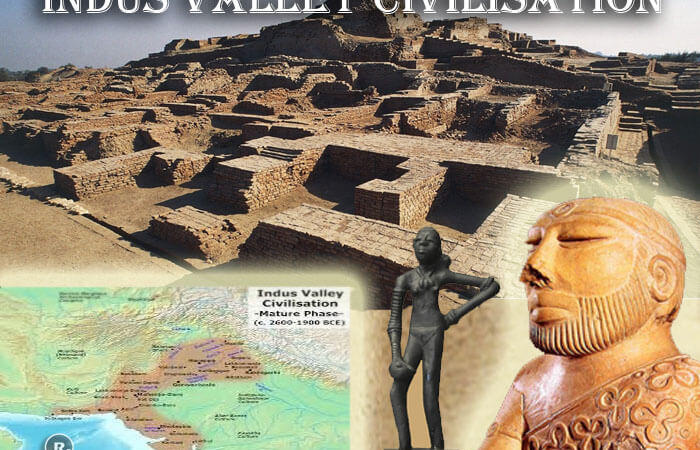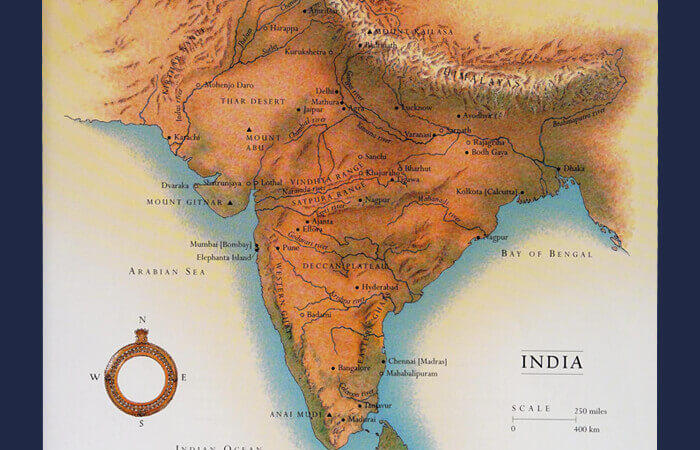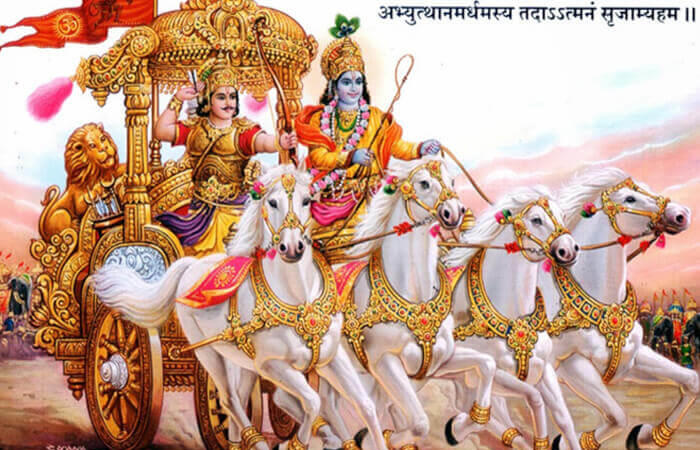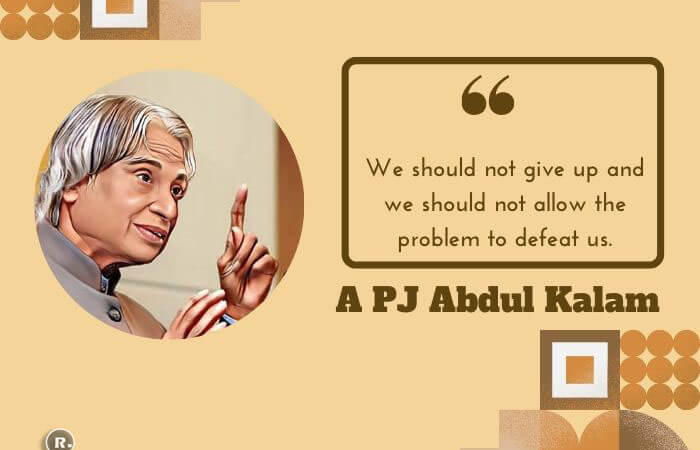Bhimrao Ramji Ambedkar (1891-1956)
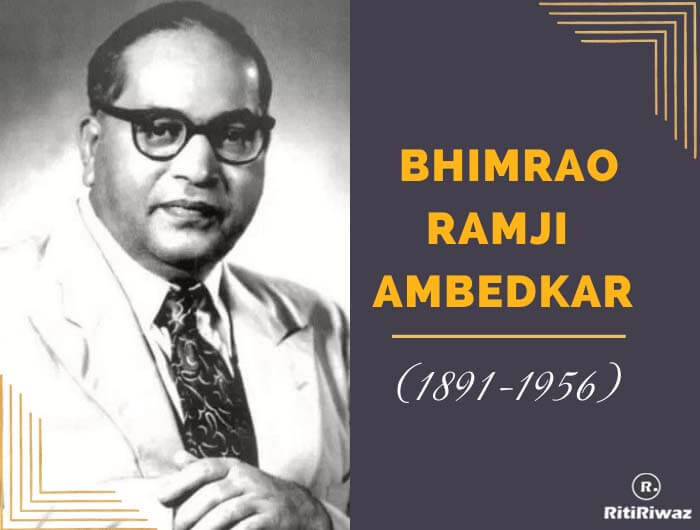
Dr. Bhimrao Ramji Ambedkar, also known as Babasaheb Ambedkar, was a judicial, social and political reformer. He is also known as the father of the Indian Constitution, he was a noted politician and an eminent jurist. His efforts to eradicate social evils like untouchability and caste ban are notable.
Babasaheb Ambedkar Ji’s main focus was mainly on achieving social and political rights of Dalits and other lower castes and sections. After India’s independence, he became the leader of the Dalit class and representative of those considered socially untouchable.
Throughout his life, he fought for the rights of Dalits and other socially backward classes. Ambedkar was appointed as India’s first law minister in Jawaharlal Nehru’s cabinet. In 1990, he was posthumously awarded the Bharat Ratna, the highest civilian award of India.
Fast Facts
Birthday: 14 April 1891
Birth Place: Mhow, Indore, Madhya Pradesh
Spouse: First marriage – Ramabai Ambedkar (1906–1935);
Second marriage – Savita Ambedkar (1948–1956)
Father: Ramji Maloji Sakpal
Mother: Bhimabai Mubaradkar
Died On: 6 December 1956
Place Of Death: Delhi, India
Famous idea:
• Development of intelligence should be the ultimate goal of human existence.
• Be educated! Stay organized! Struggle!
• Education is the milk of a lioness, anyone who drinks it will roar like a lion.
• History shows that where there is a conflict between morality and economics, there is always the victory of economics.
• The development of any community comes from the development of the women of that community.
Political ideology: Equality
Publication: Essay on Untouchables and Untouchability:
The Annihilation of Caste
Waiting for Visa (Waiting for a Visa)
Early Life
Dr. Bhimrao Ambedkar was born on 14 April 1891 in the house of Ramji Maloji Sakpal and Bhimabai in Mhow near Indore, Madhya Pradesh. When Ambedkar was born, his father was a Subedar in the Indian Army and his posting was in Indore.
His father Ramji Maloji Sakpal retired in 1894 after 3 years and his entire family shifted to Satara, Maharashtra. Bhimrao Ambedkar belonged to the Hindu “Mahar” caste, which was called an untouchable caste in the society, and due to this, he faced discrimination socially and economically. When he was 5, his mother died. He was raised by his aunt. He was the 14th child of his parents. Bhimrao wanted to read Sanskrit, but being untouchable, he was not considered an officer of Sanskrit reading. BR Ambedkar took his primary education at Satara in Dapoli.
In April 1906, when he was 15, he was married to Ramabai, a nine-year-old girl. He then took admission at Elphinstone High School in Bombay, thus becoming the first Dalit to pursue higher education. In 1907 he obtained a matriculation degree.
A convocation was also organized on this occasion, impressed by the talent of Bhimrao Ambedkar in this ceremony, his teacher Shri Krishnaji Arjun Keluskar gave him a book written by himself as ‘Buddha Charitra‘. At the same time, after getting the fellowship of Baroda King Sayaji Rao Gaekwad, Ambedkar continued his further studies.
Ambedkar Ji had a great interest in studies since childhood and he was a promising and intelligent student, so he went on to succeed in every examination with good marks. In 1908, Dr. Bhimrao Ambedkar made history again by taking admission to Elphinstone College. Actually, he was the first Dalit student who enrolled in college to pursue higher education.
He passed the graduation examination from the University of Mumbai in 1912. He passed from Persian after being forbidden from studying Sanskrit. He graduated from this college with degrees in Economics and Political Science.
Admission to Columbia University of America
Bhimrao Ambedkar was made the defense minister in his state by the Baroda state government, but even here untouchability did not stop him and he had to face humiliation many times. But he did not work in it for long as he was awarded the Baroda State Scholarship for his talent which led him to pursue a postgraduate degree at Columbia University in New York City. He moved to the US in 1913 to continue his studies.
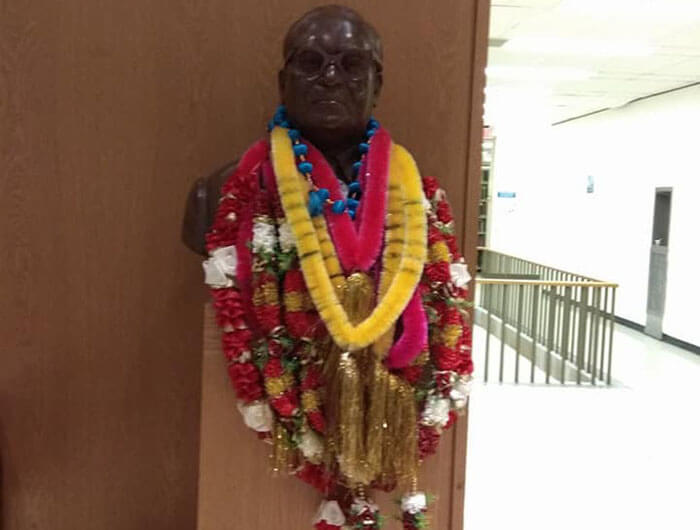

In the year 1915, Ambedkar – BR Ambedkar Ji earned a Master’s degree in Economics with Sociology, History, Philosophy, and Anthropology from Columbia University, USA. After this, he did research on ‘Commerce of Ancient India’. In 1916, he received his Ph.D. from Columbia University, USA. Degree, his Ph.D. The theme of the research was ‘decentralization of natural finance in British India’.
University of London
He had to return to India when the fellowship was over. He was returning to India via Britain. Then he got his M.Sc. in London School of Economics and Political Science there. And got his registration done for the degree of Bar-at-Law in D.Sc and Law Institute and then returned to India.
On his return to India, he first accepted the responsibility of military officer and financial advisor in the court of the King of Baroda as a condition of scholarship. He worked as the Secretary of Defense for the state. However, this task was not so easy for him because he was suffering a lot due to caste discrimination and untouchability, even in the entire city, nobody was ready to give him a house for rent.
After this, Ambedkar – BR Ambedkar left the job of the military minister and joined the job of a private teacher and accountant. Here he also set up a consultancy business (consultancy business), but here also untouchability did not stop the pursuit and his business was ruined due to social status.
In the last, he went back to Mumbai where he was helped by the Bombay Government and became Professor of Political Economics at Sydenham College of Commerce and Economics, Mumbai. During this time he collected money for his further studies and once again went to England outside India in the year 1920 to continue his studies. In 1921, he earned a master’s degree from the London School of Economics and Political Science, and two years later received his DSc.
BR Ambedkar also spent a few months studying at the University of Bonn, Germany. In the year 1927, he did his DSc in Economics. After completing his law studies, he worked as a barrister in the British Bar. On June 8, 1927, he was awarded a doctorate by Columbia University.
Political Career
In the year 1930, Bhimrao Ambedkar started the Kalaram Temple Satyagraha. In which about 15,000 volunteers participated. Not only this, the procession was led by a military band and a batch of scouts was also included in this movement. For the first time, men and women were seeing God in the discipline. When all the agitators reached the temple gate, they were locked by the Brahmin officials standing at the gate. The gate was opened when protests erupted. As a result, Dalits were allowed to enter the temple.
In 1932, when the British, agreeing with Ambedkar, announced a “separate electorate” for the untouchables, Mahatma Gandhi began a fast unto death at the Yerwada Central Jail in Pune, opposing it. In the year 1936, Bhimrao Ambedkar founded the “Independent Labor Party“, which won 15 seats in the 1937 Central Legislative Assembly elections.
Between the years 1941 and 1945 he published a large number of controversial books and pamphlets, including “Thoughts on Pakistan“. In which he criticizes the Muslim League’s demand for a separate country of Pakistan for Muslims.
Bhimrao Ambedkar was also a great critic of Islam and the customs of South Asia. He favored the partition of India, but strongly condemned the practice of child marriage prevalent among Muslims and the mistreatment of women.
After India’s independence on 15 August 1947, when the new Congress-led government came into existence, his reputation as a scholar led to his appointment as the first law minister of independent India and chairman of the committee responsible for constituting the independent committee.
Thereafter, the constitution drafted by Ambedkar provided constitutional guarantees and protection of individual civil liberties, including freedom of religion, abolition of untouchability, and violation of all forms of discrimination. Apart from this, he argued for macroeconomic and social rights for women and arranged for reservation of civil services, jobs in schools and colleges for members of Scheduled Castes (SC) and Scheduled Tribes (ST) and Other Backward Classes (OBC). Won the support of the assembly, to begin with, which was affirmative action.
In independent India, when the national flag was being discussed, he was the chairman of Bhimrao Ambedkar “Savindhan Drafting Committee“. Who suggested the Ashoka Chakra in the national flag. Due to them, the Ashoka Chakra is displayed in the tricolor today.
Ambedkar opposed Article 370 of the Constitution of India, which accorded special status to the state of Jammu and Kashmir and was included in the constitution against his wishes. Finance Commission was established in the country on the basis of Bhimrao Ambedkar’s second research paper ‘Development of Provincial Finance in British India’.
He wrote three books on economics: Administration and Finance of the East India Company, The Evaluation of Provincial Finance in British India, The Problem of the Rupi: Its Origin and Its Solution.
BR Ambedkar’s conversion to Buddhism
In the 1950s, Bhimrao Ambedkar was attracted to Buddhism and went to Sri Lanka (then Ceylon) to attend conferences of Buddhist monks. And on 14 October 1956, Dr. Bhimrao Ambedkar organized a formal public conversion ceremony for himself and his supporters in Nagpur city. First of all, Dr. Ambedkar, along with his wife Savita and some associates, embraced Buddhism by the monk Mahasthaveer Chandramani, adopting the Triratna and Panchsheel in the traditional way.
Bharat Ratna Dr. B. R. Ambedkar made a significant contribution to nation-building in 65 years of his life by doing countless works in various fields, social, economic, political, educational, religious, historical, cultural, literary, industrial, constitutional, etc.
Books
- First published article – Castes in India: Their System, Origin, and Development (Castes in India: Their Mechanism, Genesis and Development)
- Evolution of Provincial Finance in British India.
- Annihilation of Caste.
- Who’s the Shudras? (Who Were the Shudras?)
- The Untouchables: A Thesis on the Origin of Untouchability (The Untouchables: Who Were They and Why They Became Untouchables)
- Thoughts on Pakistan
- The Buddha and His Dhamma
- Buddha or Karl Marx
Death
BR Ambedkar was very upset with his deteriorating health in the years 1954 and 1955. He was surrounded by diabetes, eye blur, and many other diseases due to which his health was continuously deteriorating. On 6 December 1956, Ambedkar died of prolonged diabetes (Mahaparinirvan) at his home in Delhi.
After a long illness, he breathed his last at his home in Delhi on 6 December 1956, he had converted himself to Buddhism, so his funeral was performed according to the custom of Buddhism. His funeral was attended by hundreds of people, to bid him a final farewell.

